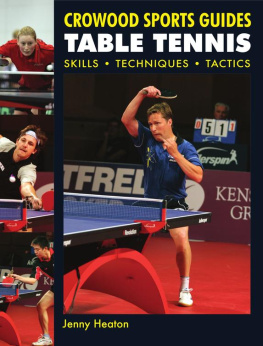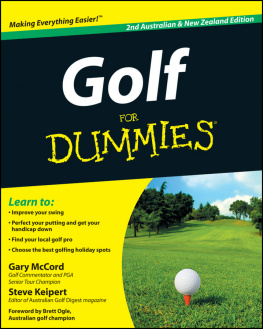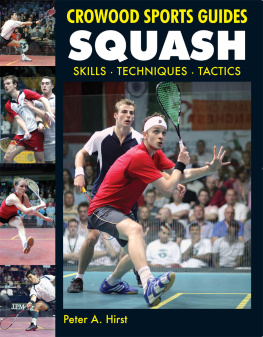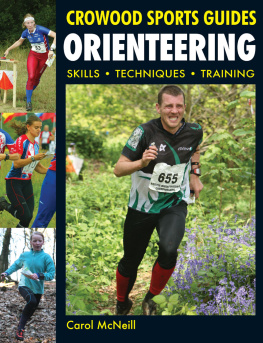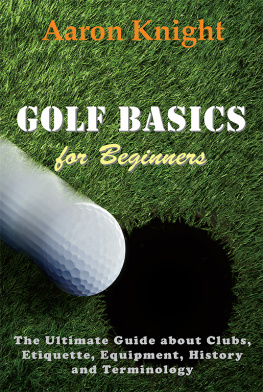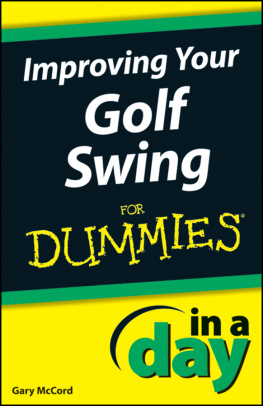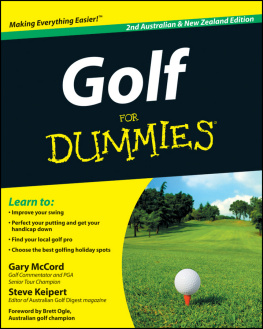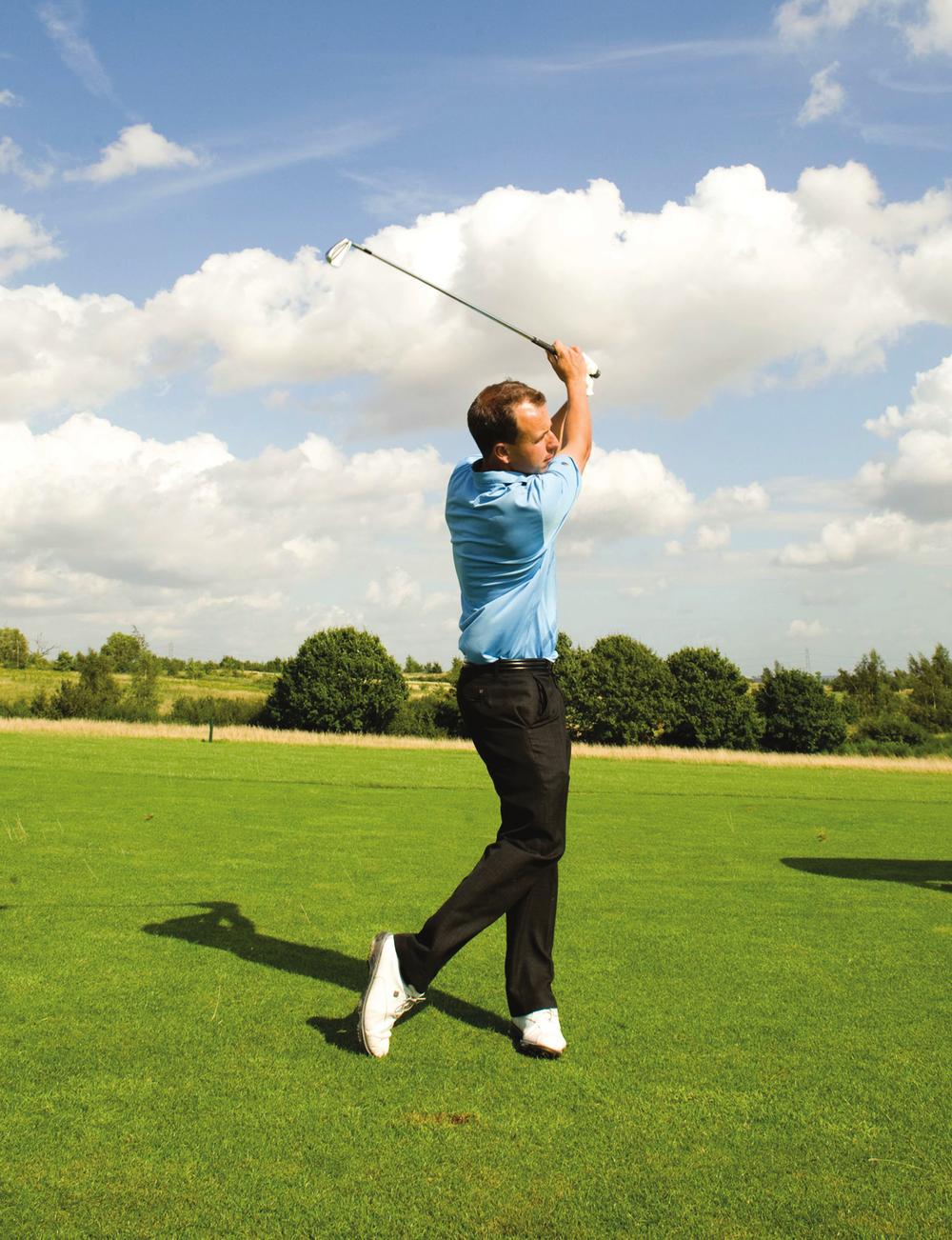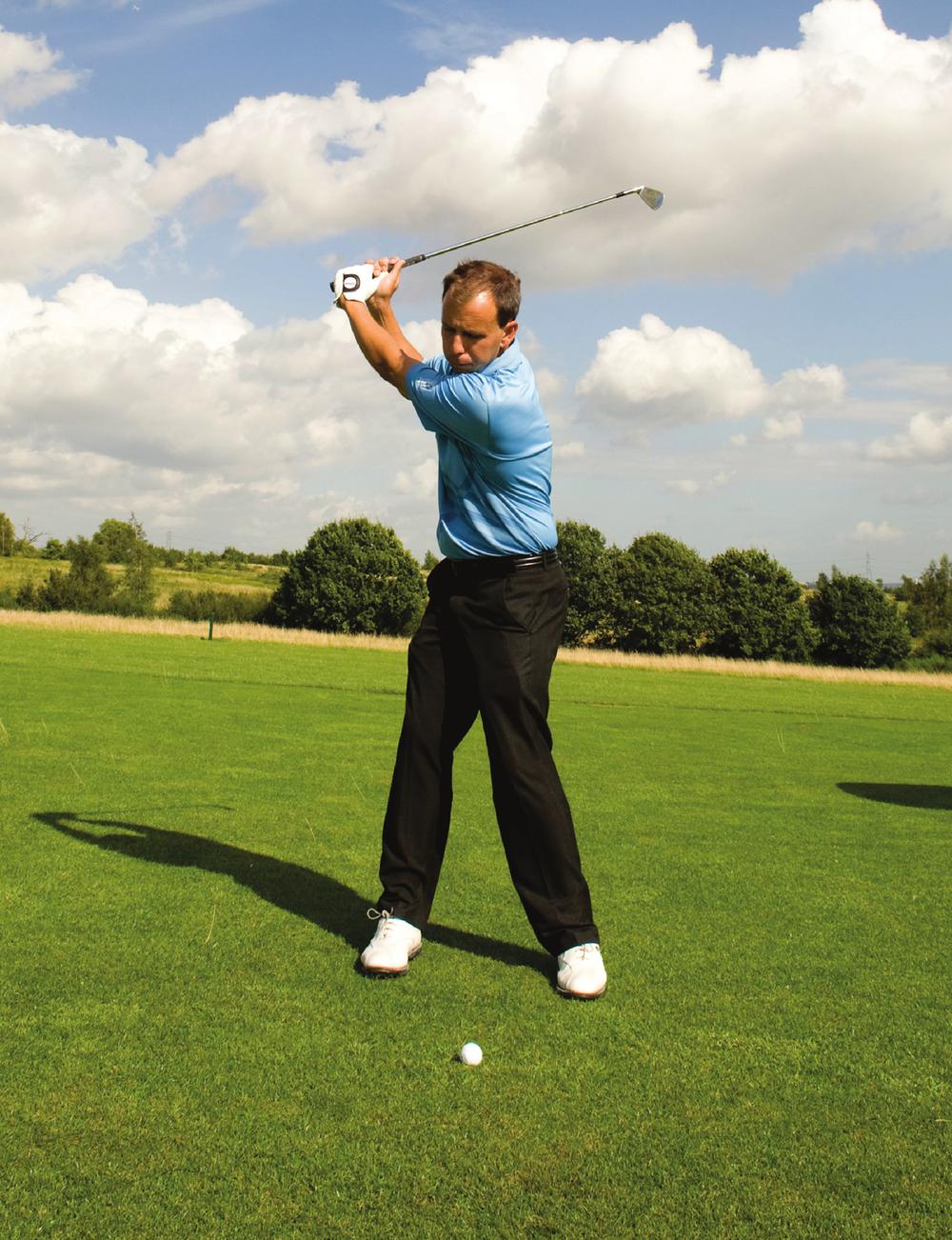First published in 2013 by
The Crowood Press Ltd
Ramsbury, Marlborough
Wiltshire SN8 2HR
www.crowood.com
This e-book first published in 2013
The Crowood Press 2013
All rights reserved. No part of this publication may be reproduced or transmitted in any form or by any means, electronic or mechanical, including photocopy, recording, or any information storage and retrieval system, without permission in writing from the publishers.
British Library Cataloguing-in-Publication Data
A catalogue record for this book is available from the British Library.
ISBN 978 1 86126 638 3
Photographs by George Powell, www.gppics.com
Diagrams by Charlotte Kelly
Welcome to the Crowood Sports Guide: Golf. The aim of this book is to equip players of all abilities and experience with the tools to excel at golf and to enjoy the game. This book is aimed as much at the complete beginner who is just looking to start the game, as it is at experienced players who wish to take their skill to the next level. It is important to understand a number of different areas to play to your best, and many aspects will be looked at so that you have the tools to improve and enjoy this great game.
The we will describe the stages of getting started, the basics of the technique or the swing, then putting and the short game. This section is designed for the beginner but even the more experienced should review the information contained herein, as there will be something to help even the most advanced player.
In we will cover more advanced swing ideas, and then discuss other areas that may have an impact on your performance and enjoyment of the game, such as to how to use your practice time, the mental game, how your equipment performs, and your fitness for golf. It will also cover subjects such as how to keep improving your swing, understanding how the body works, swing plane, and the correct impact position.
Each chapter will begin with a synopsis of the objectives discussed within it, and will then explain in more detail how these objectives might be achieved. Note that the text assumes that the player is right-handed. Left-handed players should simply reverse the terms.
In this section the objectives discussed are:
- To understand golfs beginnings
- To learn about the greats of the game in order to be inspired by, and to learn from them
The Early History of Golf
The game of golf has a long history, the first mention of a stick and ball game going back to the Netherlands in 1297, where the Dutch played a game with a stick and a leather ball with the aim of using the least number of strokes to get the ball to a target a few hundred yards away. And there is even evidence of some form of the game being played in China in around the year 1000 AD . But the consensus is that the modern game evolved in Scotland, and that golf as it is today played over eighteen holes also originated in Scotland.
The first documented mention of golf in Scotland appears in an Act of the Scottish Parliament in 1457, when King James II of Scotland prohibited the playing of the games of gouf and football, as these were a distraction from archery practice for military purposes. Bans were again imposed in Acts of 1471 and 1491, with golf being described as an unprofitable sport and an unwanted distraction. Mary, Queen of Scots, was accused by her political enemies of playing golf after her second husband was murdered in 1567; George Buchanan subsequently wrote that she had been playing sports that were clearly unsuitable to women.
Golf was banned again by parliament under King James VI of Scotland, but golf clubs and balls were bought for him in 1502 when he visited the home of golf, St Andrews in Scotland. The account book of a lawyer named Sir John Foulis of Ravelston records that he played golf at Musselburgh Links on 2 March 1672, suggesting that The Old Links, Musselburgh, is the oldest playing golf course in the world. There is also a story that Mary, Queen of Scots, played there in 1567, demonstrating that she was the first golfing celebrity of her time.
The Early Era 1860 to 1930
Golf started to become established as an international sport in the late nineteenth century, with over a thousand courses coming into existence in the UK. It also started to expand in the United States, with 267 clubs in 1910, and 1,100 clubs by 1930. Golf was truly on the rise and growing rapidly. The golf ball was also changing rapidly, because prior to 1930 there were numerous different types in use and it was continually evolving. The first balls used were called featheries as they were made up of a stitched leather outer layer stuffed with feathers; however, due to the cost of manufacturing these golf balls they were replaced by gutta perca balls, which were made from the dried sap of a Malaysian Sapodilla tree. They developed from there into a ball with a liquid-filled core, which was surrounded by a layer of rubber thread and a thin outer layer. This was first developed by Coburn Haskell in the early 1900s, and this concept of a wound ball was developed and refined, and was still in use until the early twenty-first century.
The modern golf ball is made of several layers of different synthetic materials such as urethane. By using differing materials and layers, and with the aid of modern design technology, balls can have a variety of playing characteristics that will suit different players. The design process and quality control has improved, which has meant that balls are much more consistent in their performance, something that the early balls were not.
The current majors started to be played during this era, with the Open Championship in 1860 and the US Open in 1895. These helped to popularize the game and encouraged participation.
One of the great players of the era was Bobby Jones, who as an amateur won all the major tournaments of this time. In 1930 he completed the Grand Slam, when he won the US Open, the Open Championship, and the British Amateur and US Amateur championships. He also opened the Augusta National Golf Club, where he founded one of the modern majors, The Masters. Playing his first Open Championship at St Andrews in Scotland, he famously withdrew after eleven holes by tearing up his score card, stating that he didnt like links golf. Despite this he was well known for his sportsmanship both on and off the golf course. Ironically he won the Open Championship at St Andrews on his way to the Grand Slam in 1930.
Another great player of the era who helped popularize the game was Walter Hagen, famously playing numerous exhibition matches across the United States and around the world. He had an aggressive style of play and a love of tailored clothing, which helped raise the profile of professional golfers and the game.
1930 to 1960
During this period golfing equipment further developed, with the introduction of steel shafts in the clubs, replacing the wooden hickory shafts used previously. This meant that the swing began to evolve to cope with the different playing characteristics, as the steel shafts were more uniform in the way they played; they could be tailored for mass production, and modified to suit the individual.
The great players during this era were Ben Hogan, Sam Snead and Byron Nelson. Byron Nelson famously won eleven consecutive tournaments and eighteen events during 1945, with a stroke average of sixty-eight. This record remains to this day his stroke average is similar to that of modern players, but considering he had inferior equipment as compared to today, and played on courses that were far less manicured, this only goes to demonstrate his ability.


